Day 6, Chobe National Park late morning boat ride, part 2.
Continuing from my last blog entry, we had just spotted a large group of elephants on the shore. Sefi brings our boat closer.
Tonia tells us that this is a special herd: it's a "bachelor herd" of young and old male elephants. Such herds are called askaris, and they do what groups of males do most everywhere: they test their strength, chase girls, hang out, and play.
Each bachelor herd is led by an old bull elephant who not only teaches the younger males where the best watering holes and feeding spots are located, he teaches them how to be good male elephants: "male etiquette". In return, the young males treat the old bull with respect and affection. Young males without the guidance of a bull elephant have been known to express rogue behavior, such as rampaging through villages.
As we draw closer, we can sure tell that this is a herd of elephants with attitude. It's just different from the mixed herds we had seen before. We are so enthralled that we spend an hour and a half watching them. I'll let my photos and movies tell the story.
The herd in the distance:
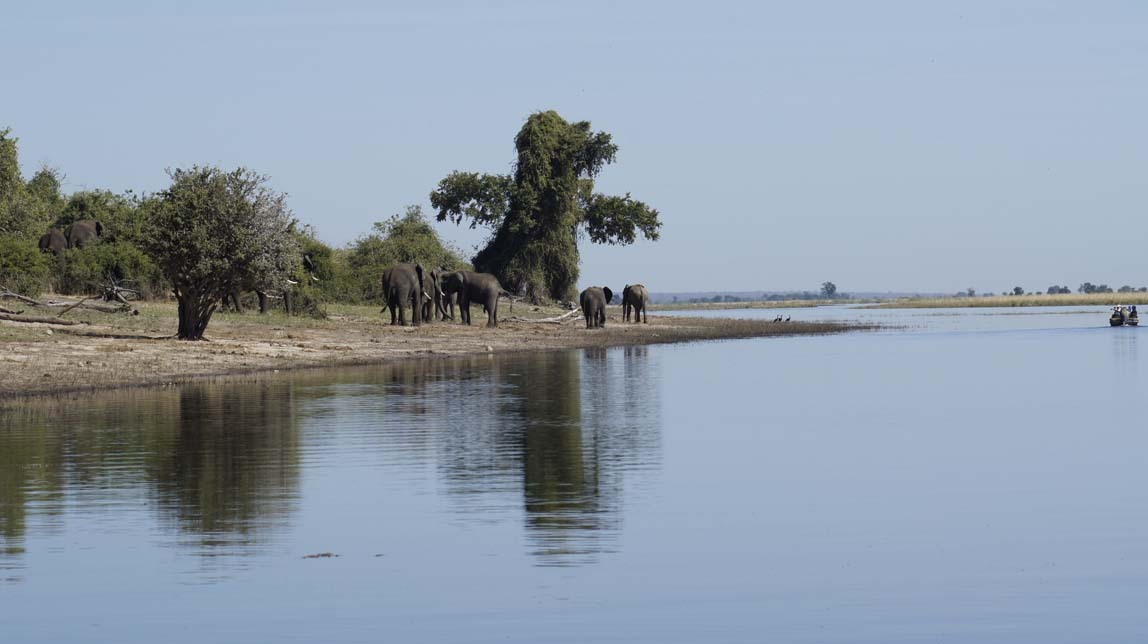
The entire herd barely fits in my camera frame:
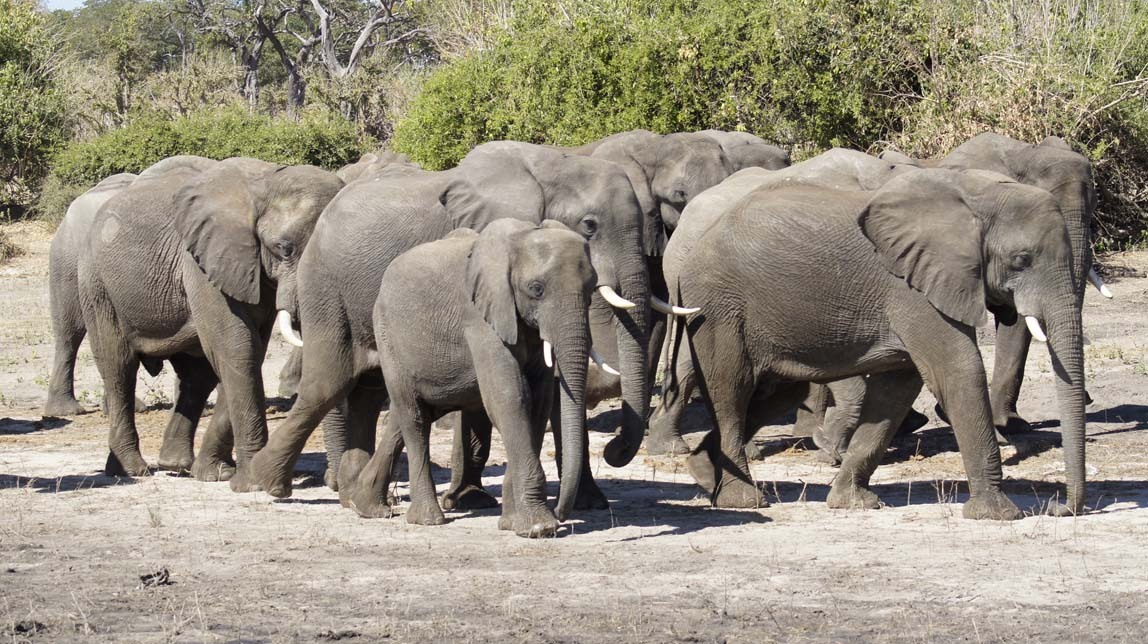
I start taking a movie. Please excuse the shaky moments, I hadn't practiced movie-taking before we went to Africa. Plus I am shooting through the big heavy lens from a rocking boat. But notice the elephants playing in the middle of the film.
This panorama shows the entire herd but you might have to scroll to see it all:

A young male with attitude:
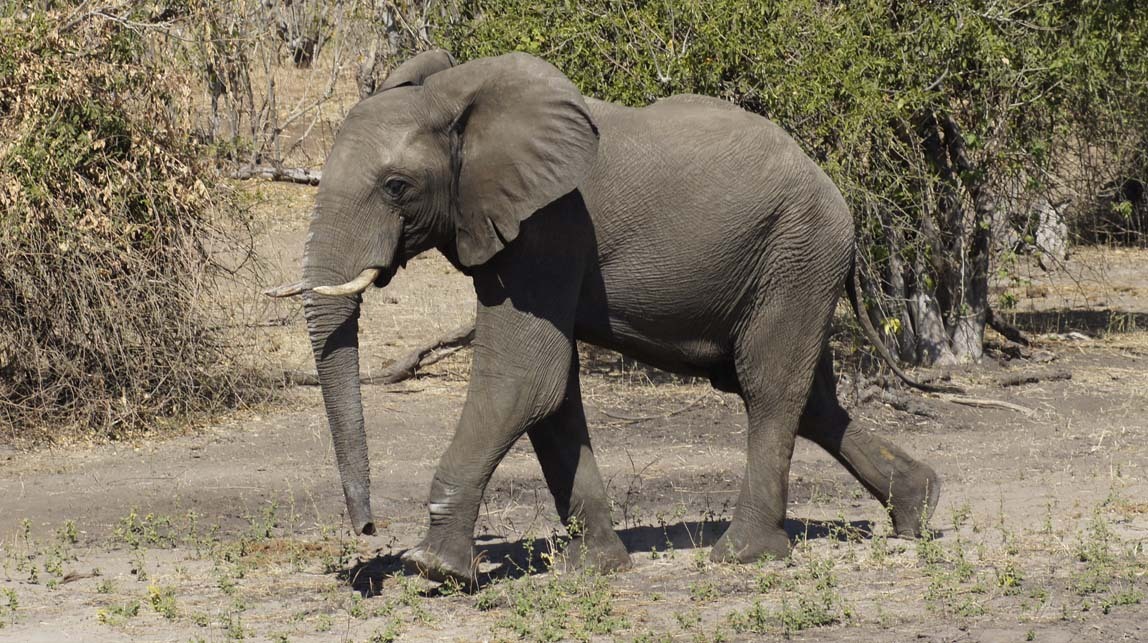
We notice a water monitor near the elephants. Hey - I know this is a crummy photo, but trust me, there's a reason for it.
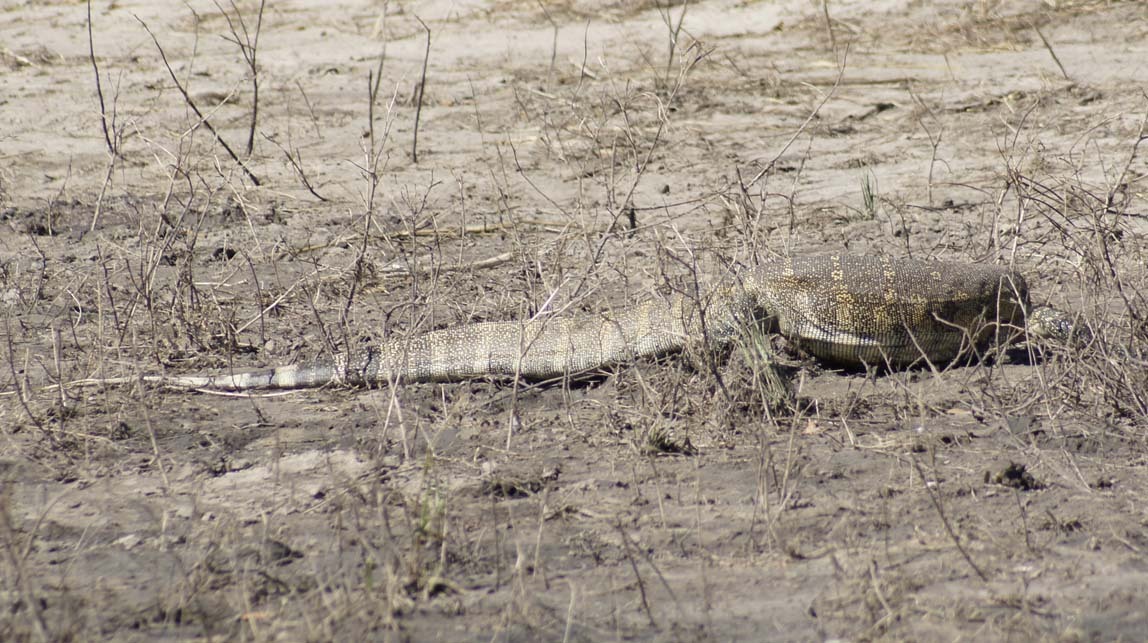
The herd gathers ranks and moves down river about half a mile. (Can you name the birds in the foreground?)
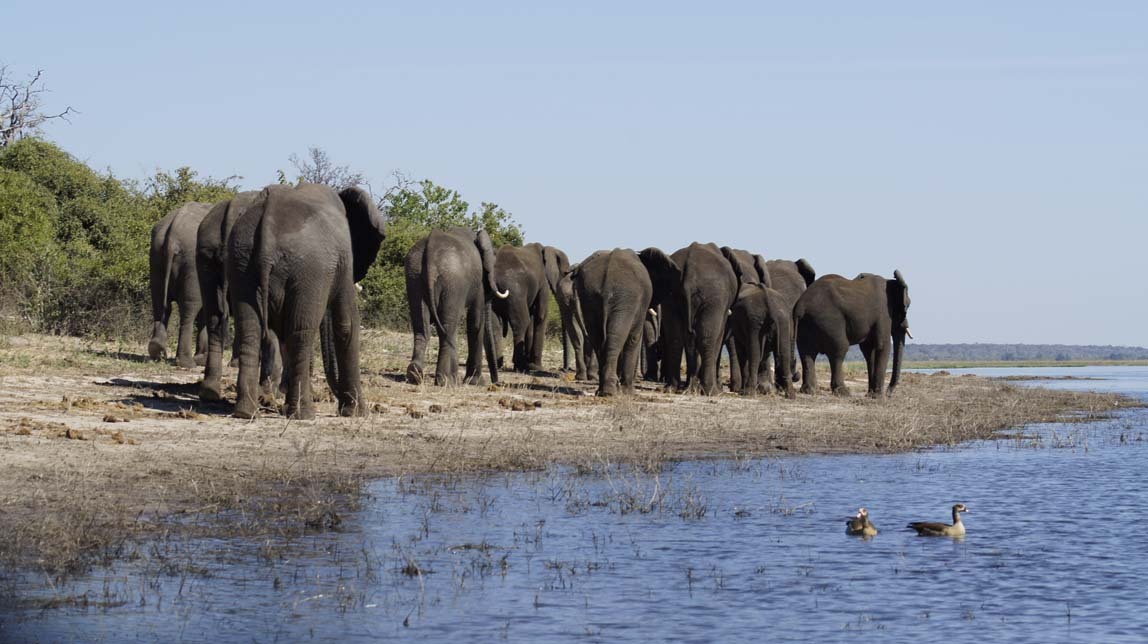
Our boat follows the herd and moves down to the other side of it, so the next photos are taken from the opposite direction (and about 25 minutes later).
The elephants came out on a small peninsula, moving around at the waters edge, flapping their ears, drinking water, and stomping in the water.
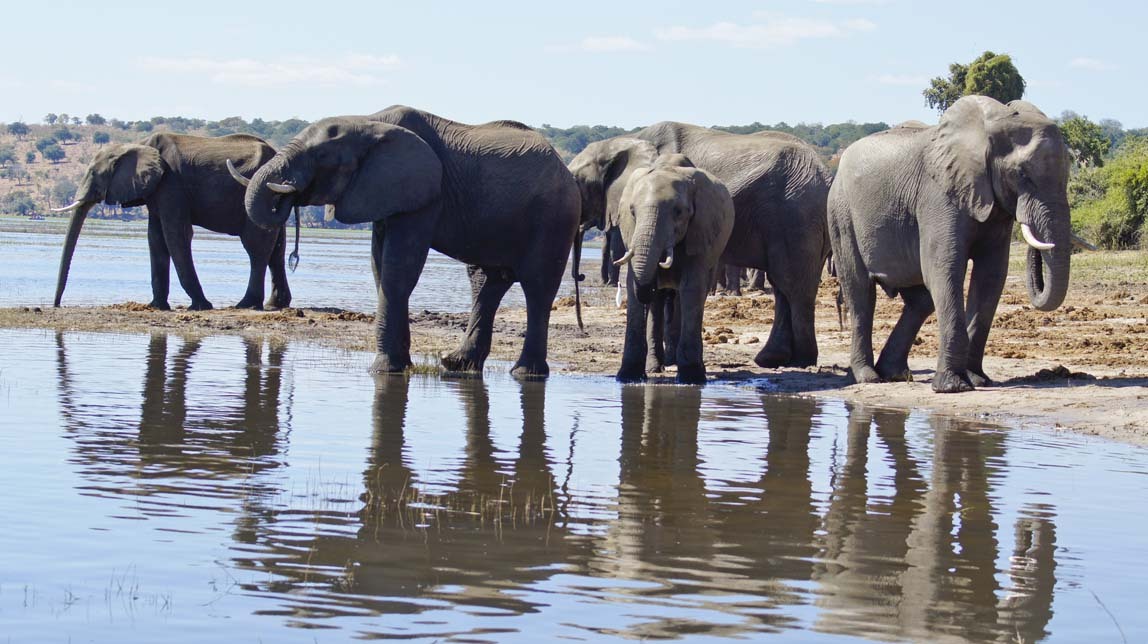
Remember that water monitor? It has followed the elephants on their travel down the river bank:
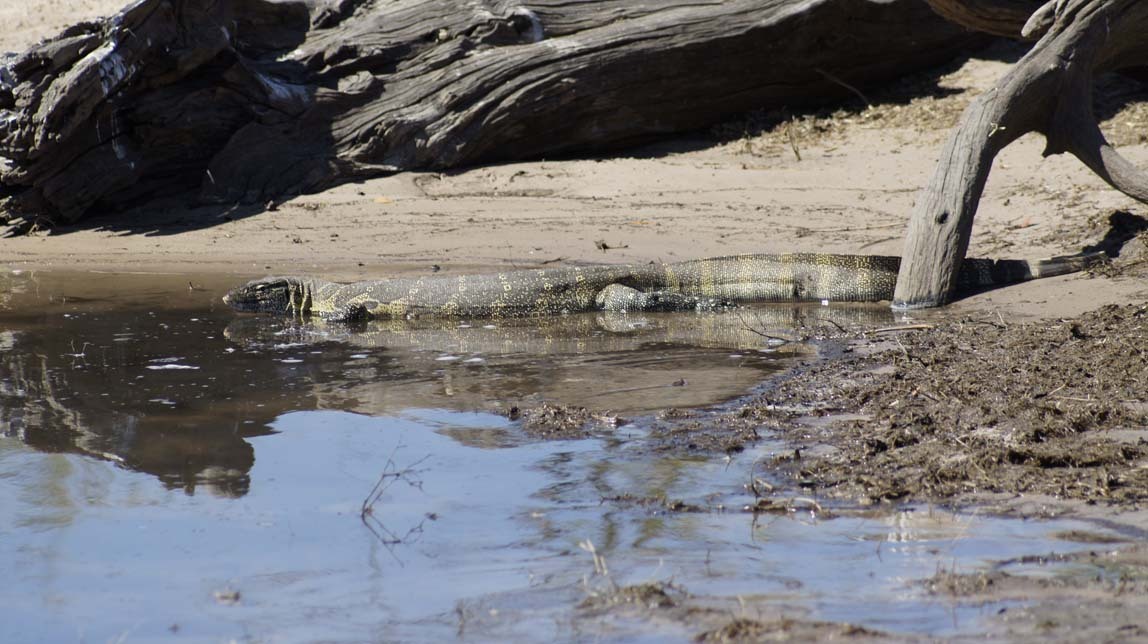
Here's a movie of the elephants milling around the river bank. The bellowing sound is from some hippos that are nearby.
Here are the elephants about ten minutes later. If you listen to the sound in the movie, you will hear us wondering if the elephants will go into the water and cross the river.
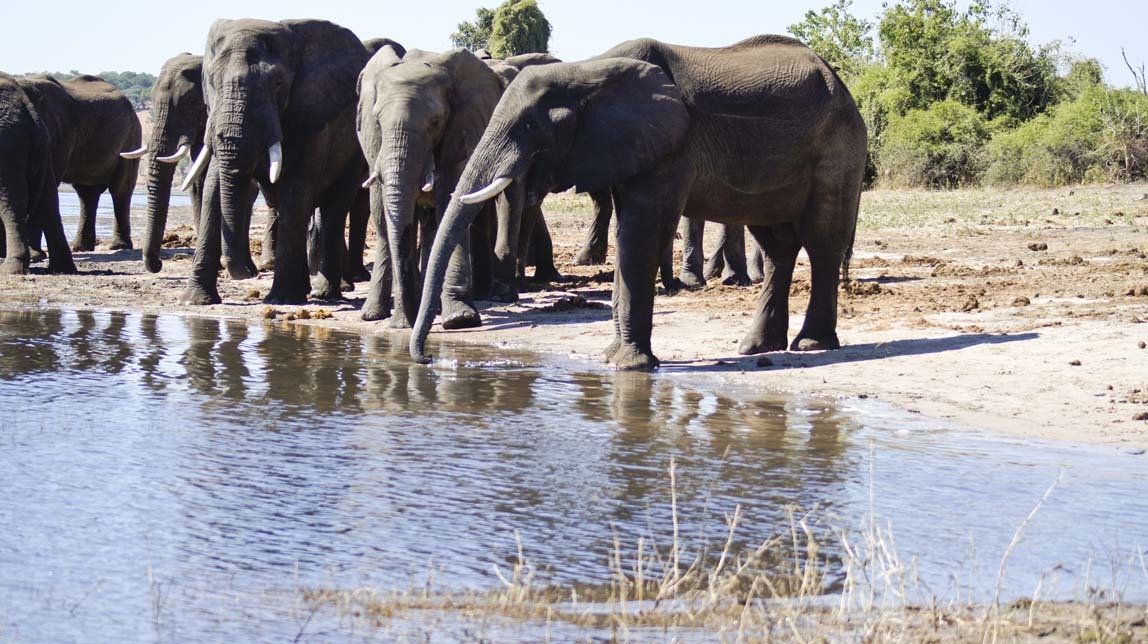
The water monitor is still following the elephants.
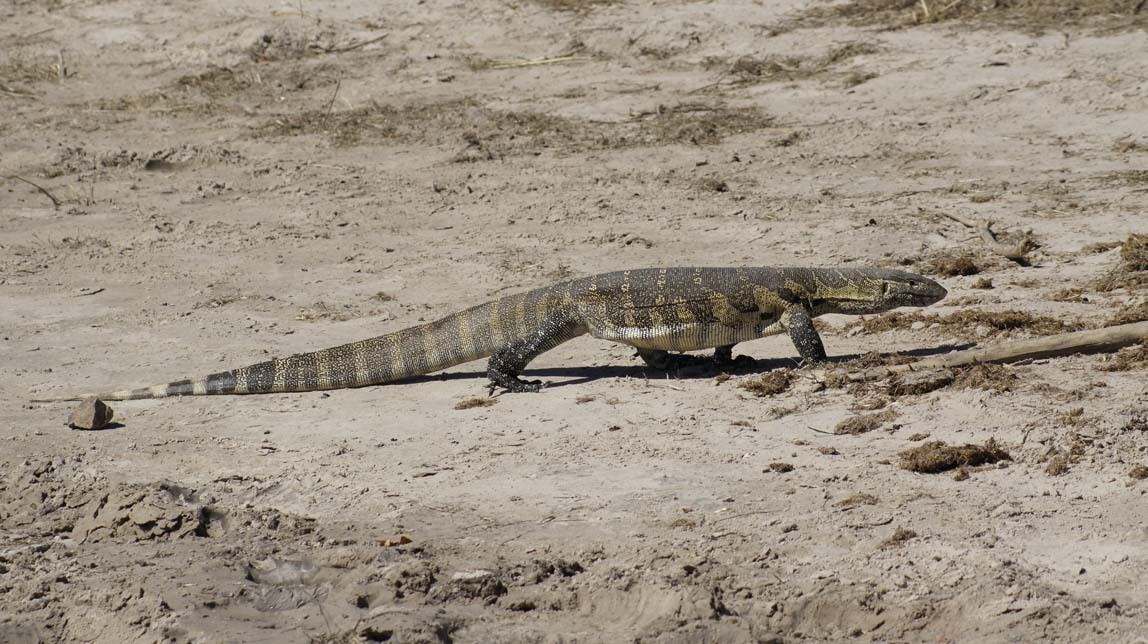
Now, watch this!
Here are some stills of the elephants in the water. The bull elephant leads:
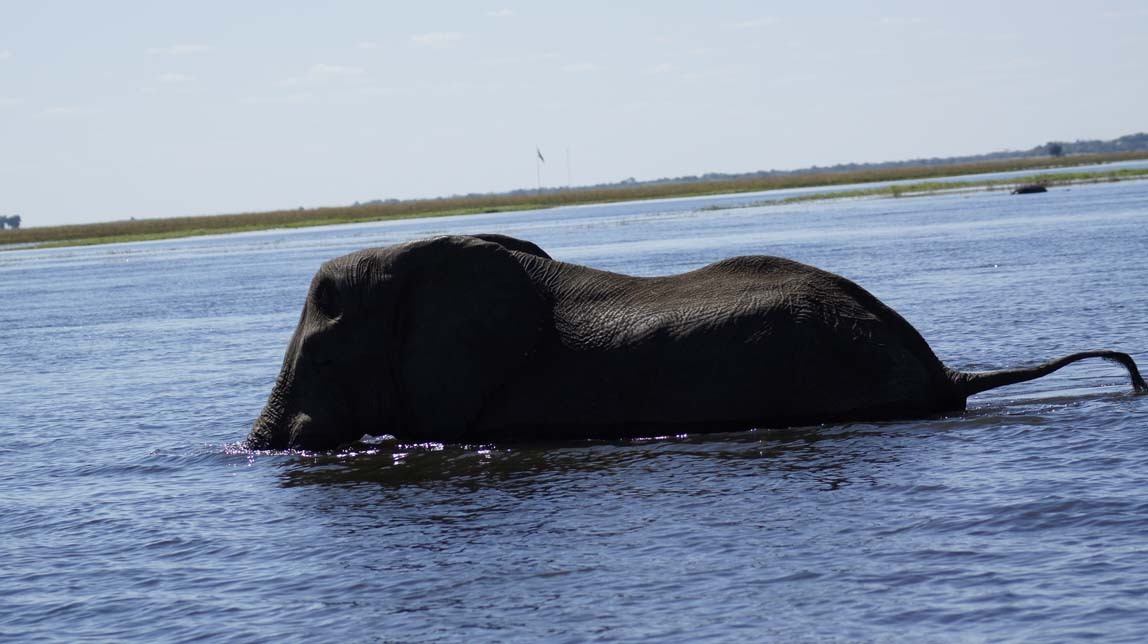
Blows water out his trunk:
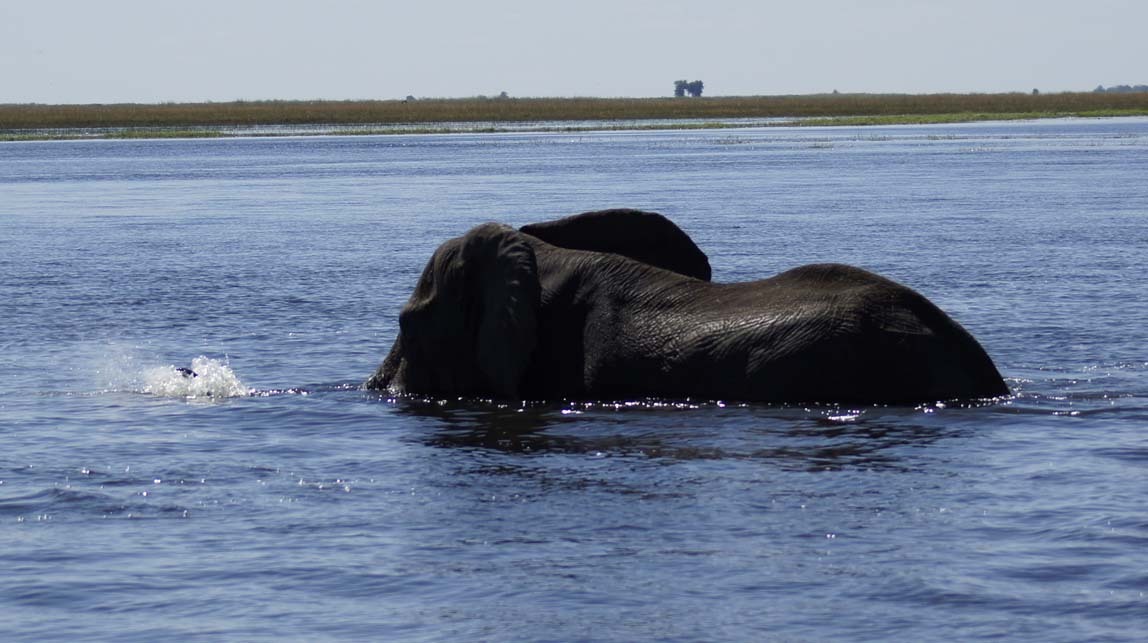
A panorama of all twelve elephants, with the bull in the front. Note the way the last male hangs back. He never did cross the river. (We are pretty sure the water monitor did, though.)

They play around a bit:
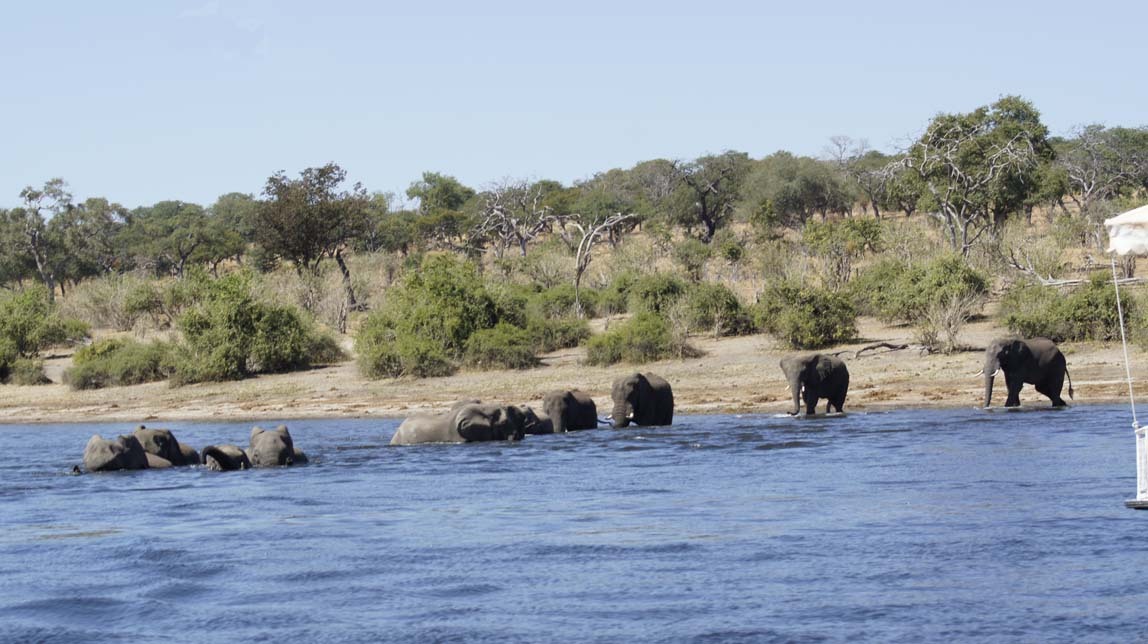
Swimming, one with his snorkel up:
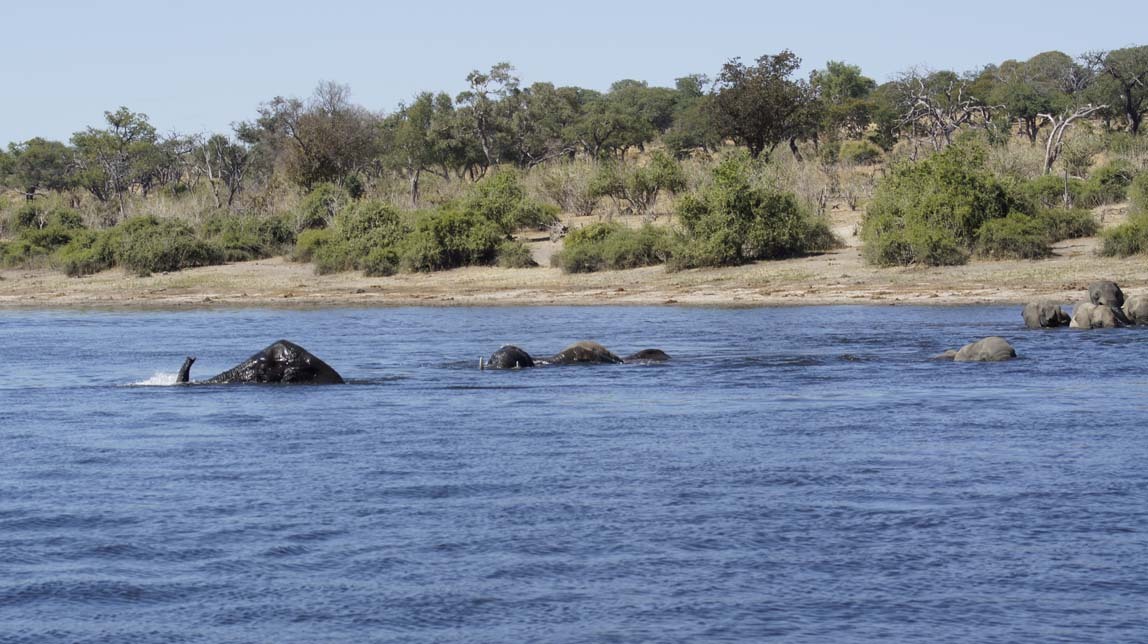
Here all you see is the tops of the elephants and their snorkels:
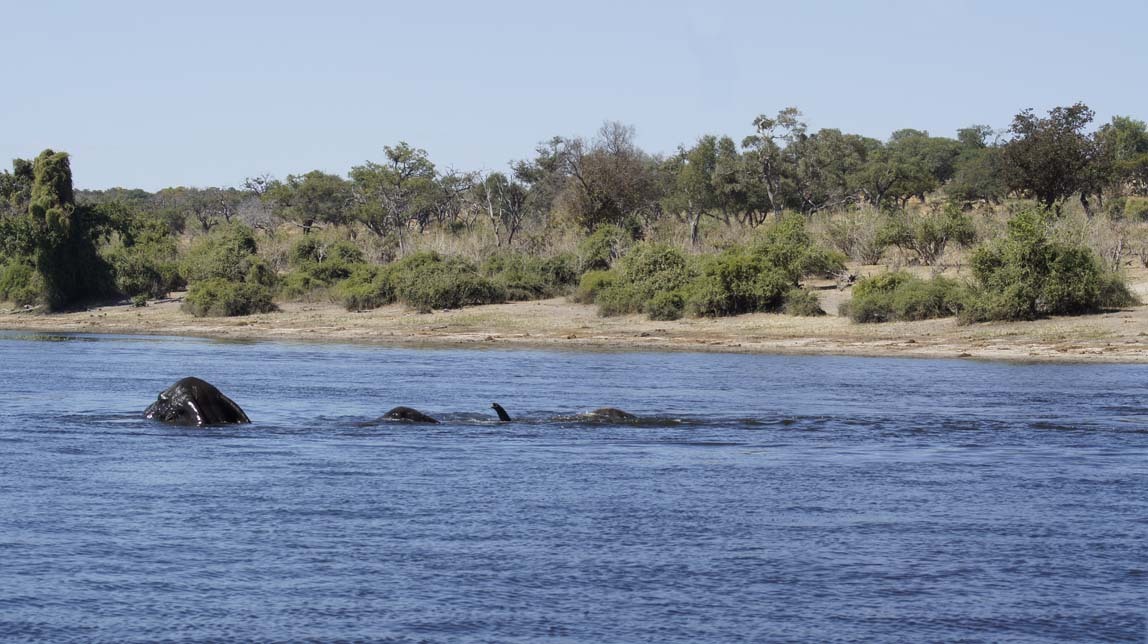
A close-up of the snorkel play:

There are three snorkels in this one:
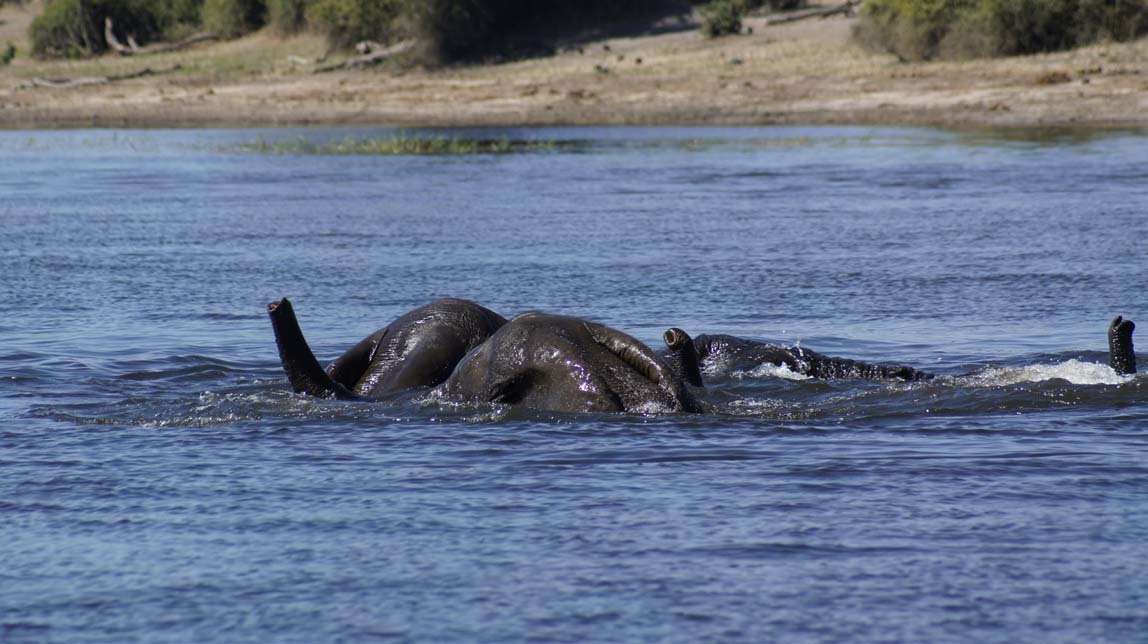
I switch back to movie mode.
The first elephants are almost to the land.
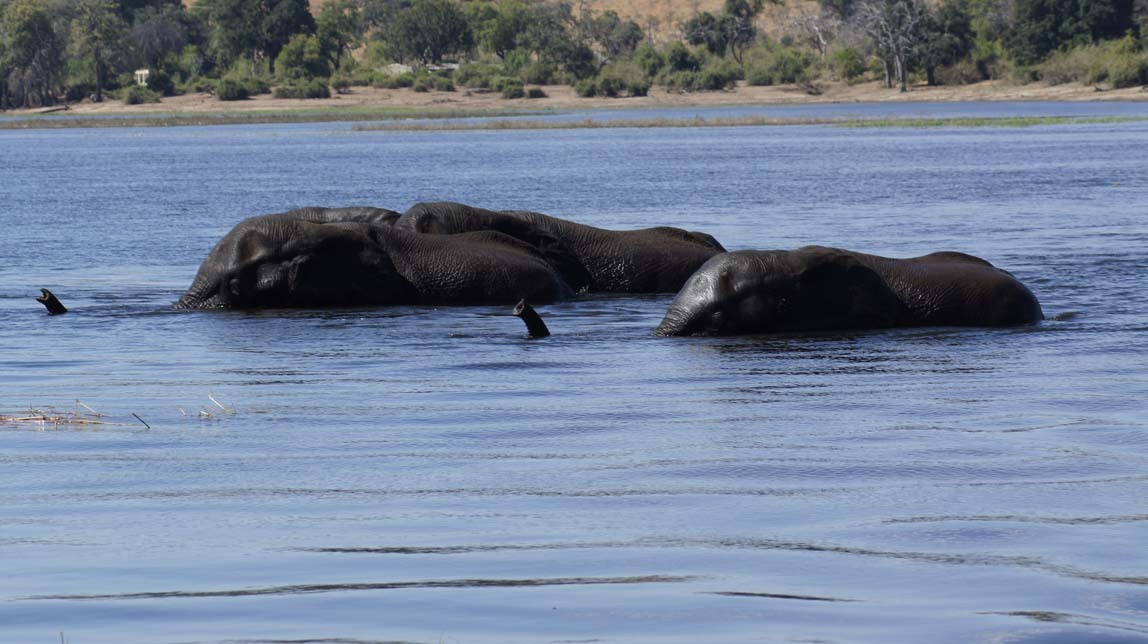
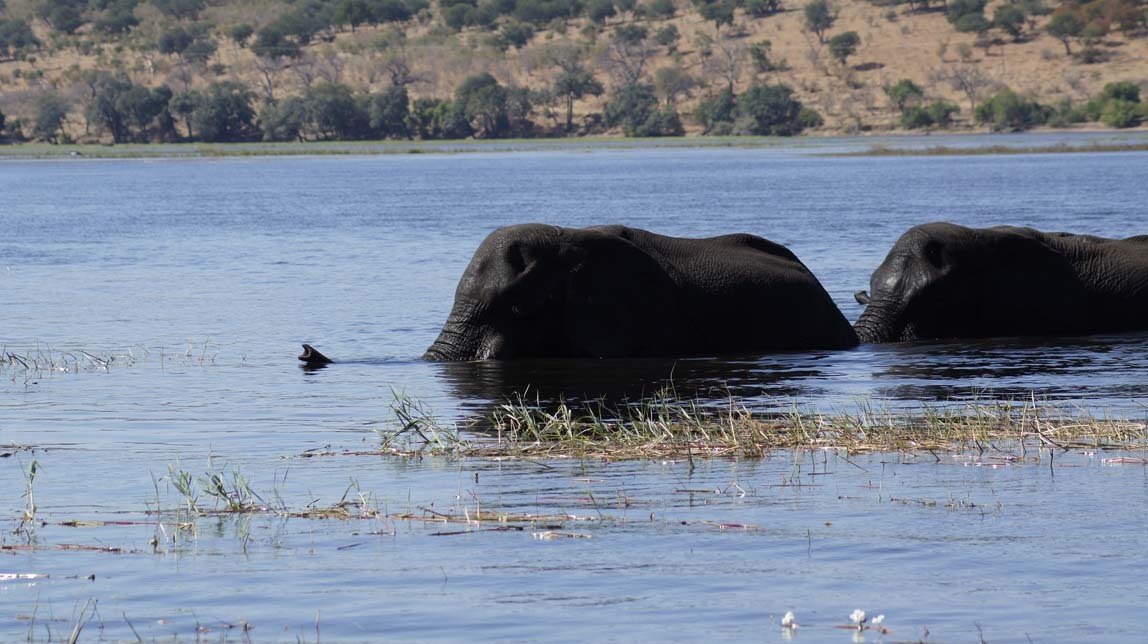
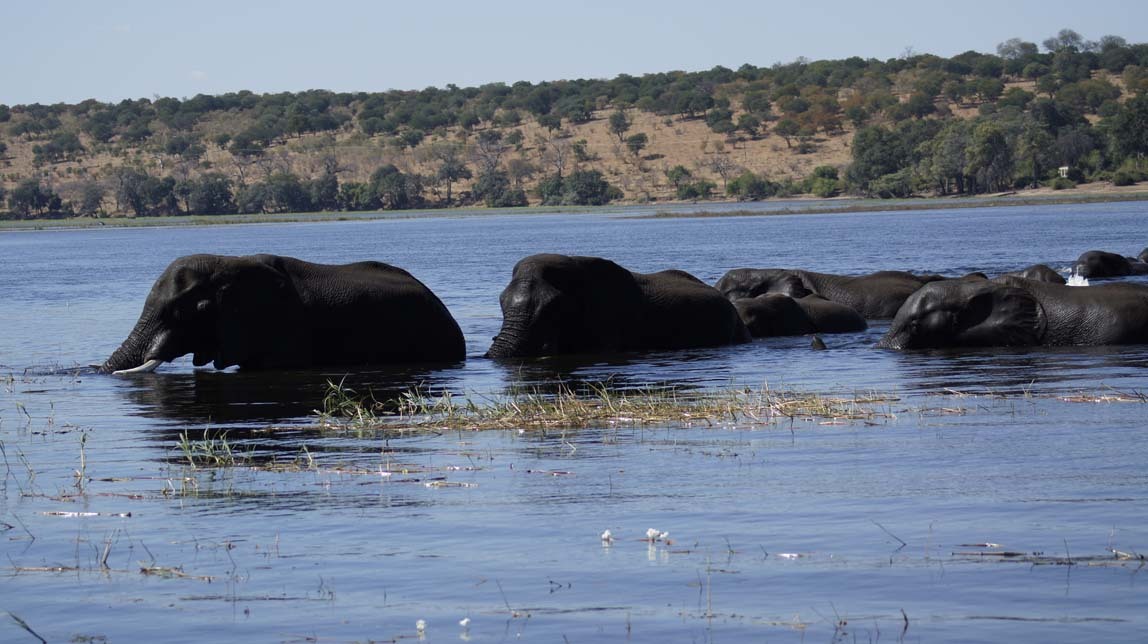
Here they are walking out of the water:
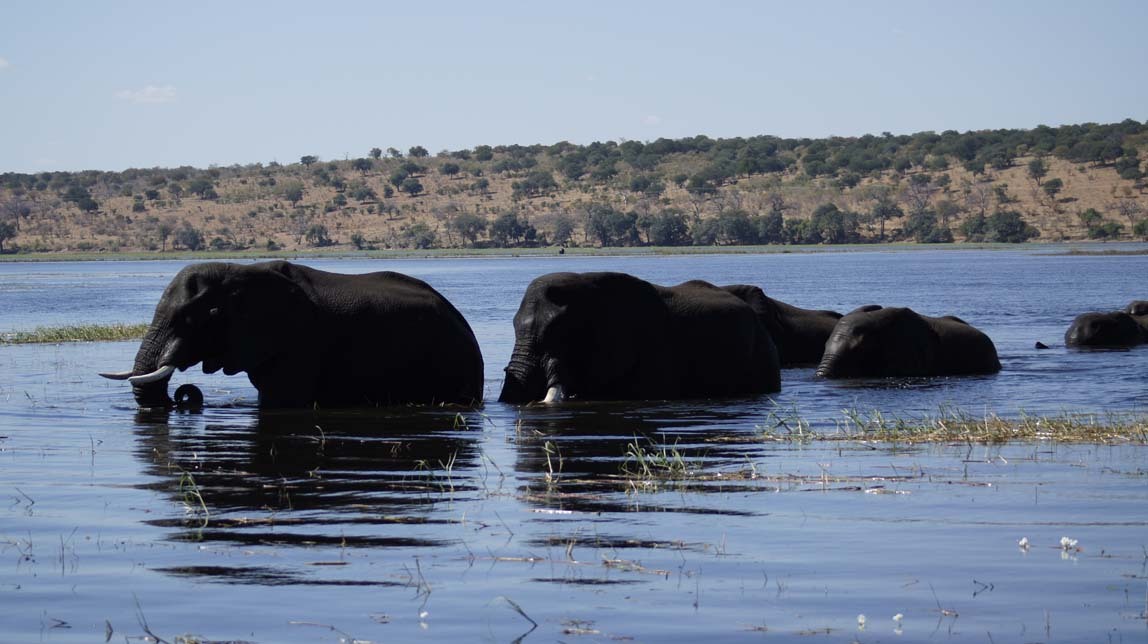
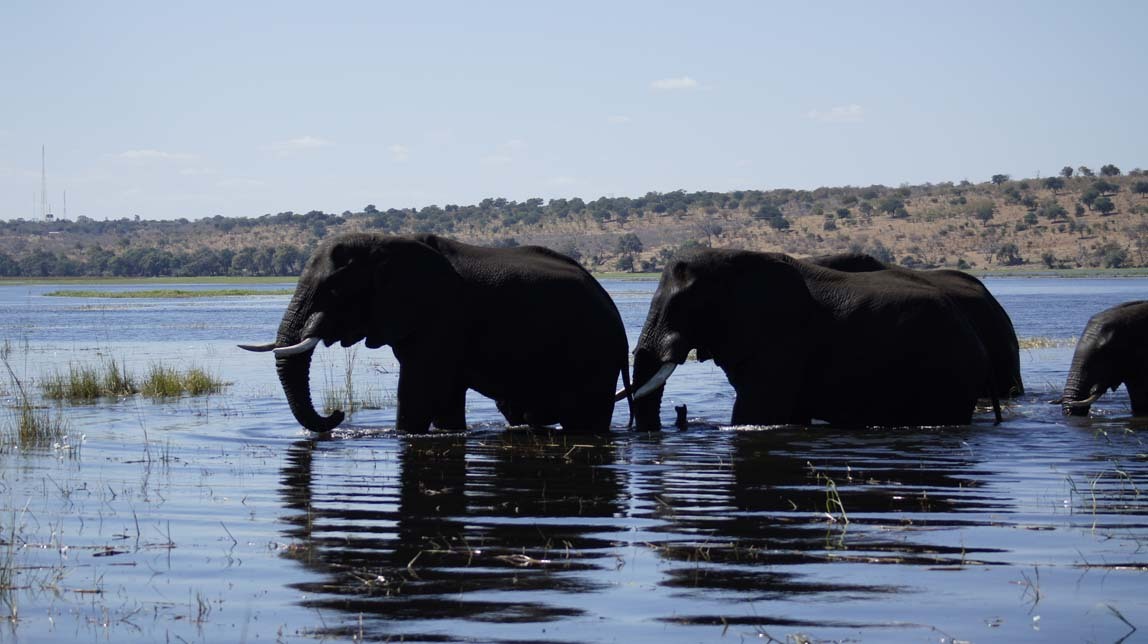
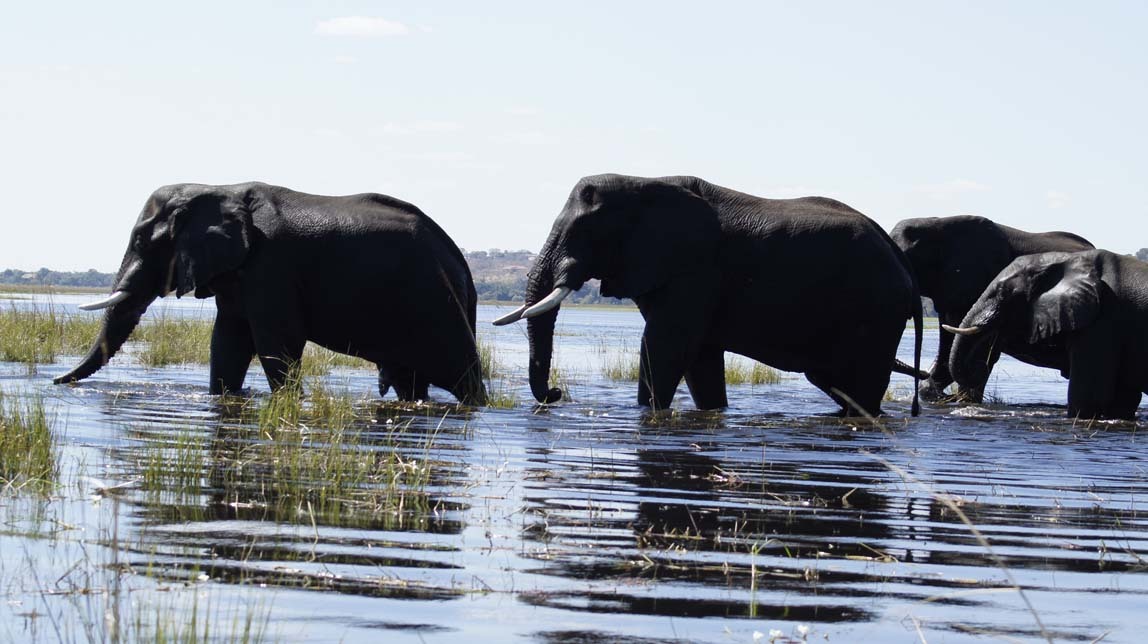
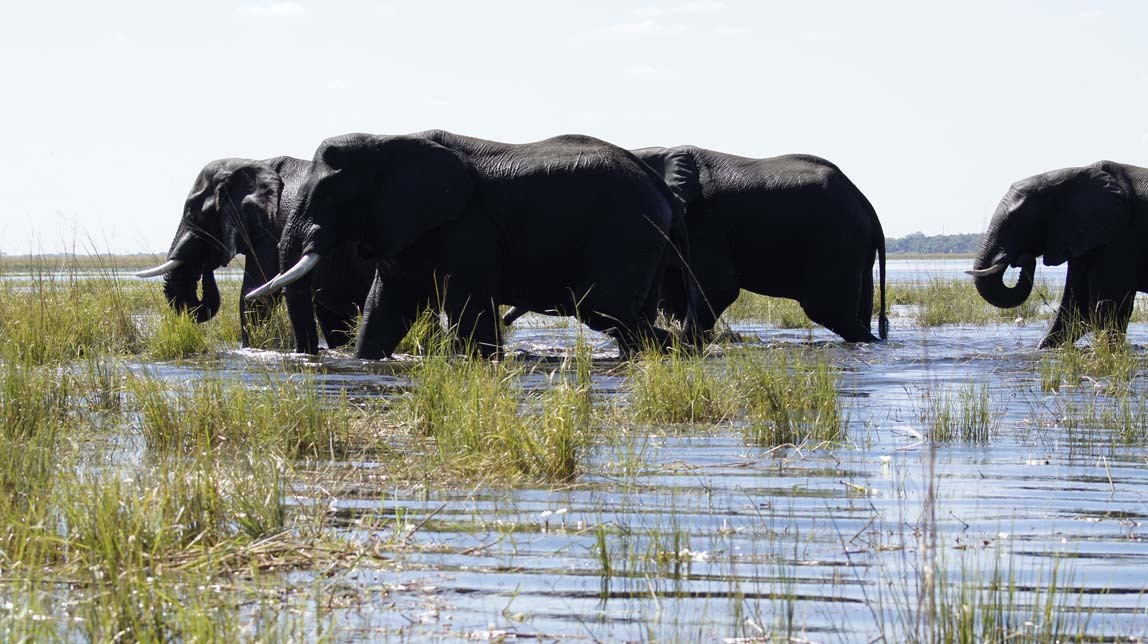
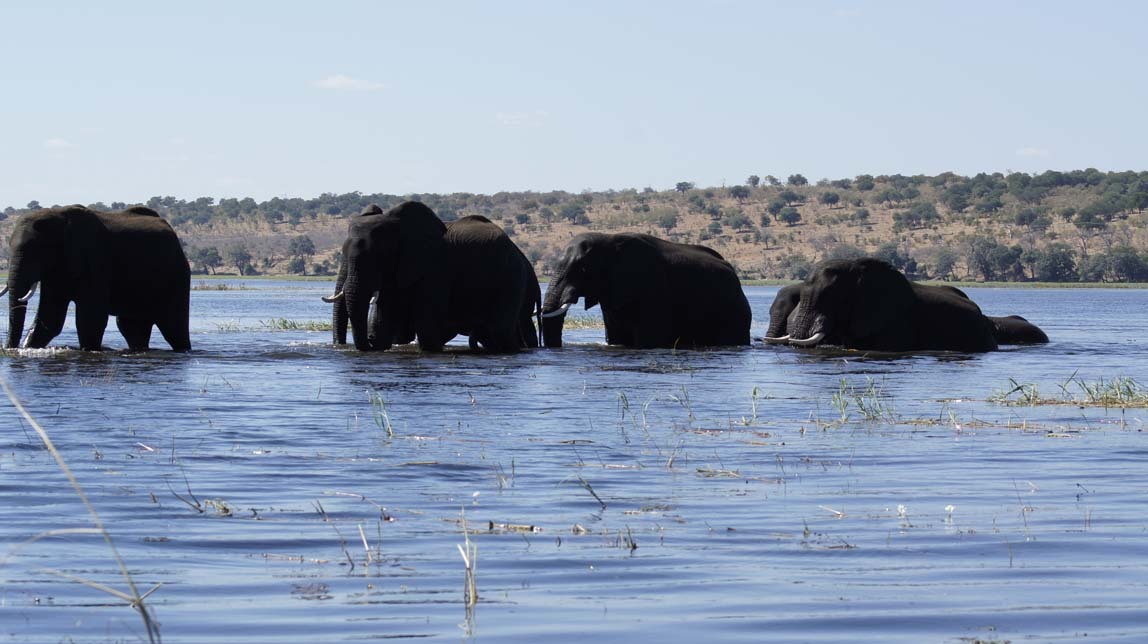
Eventually the elephants are out of the water and walking along a grassy riverbank.
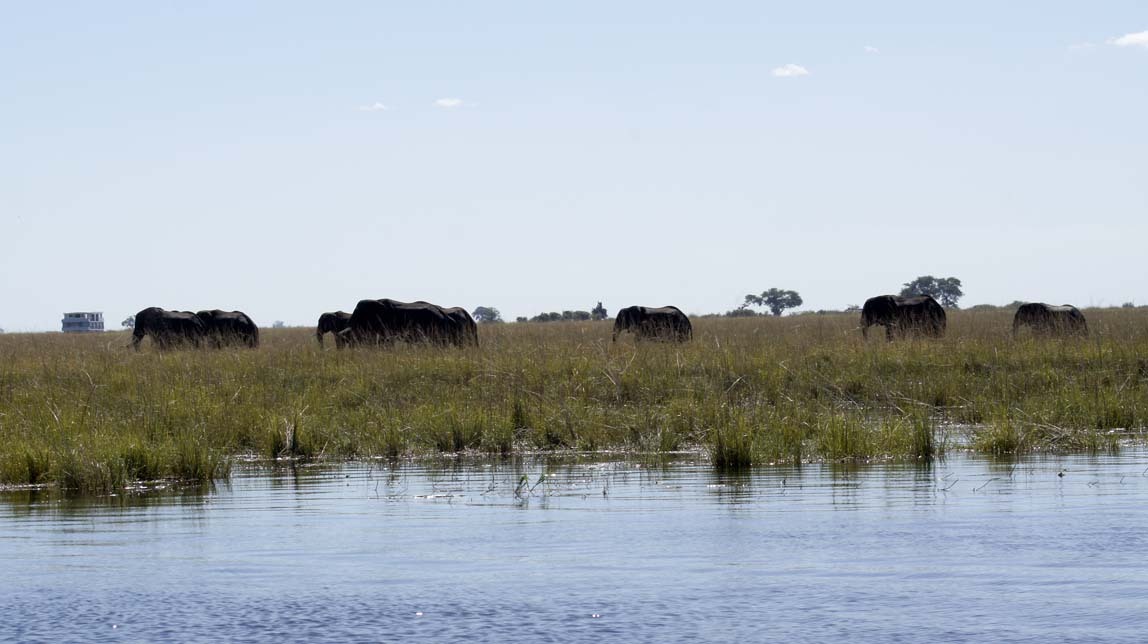
Except for the one elephant that never crossed. He is still on the other side of the river.
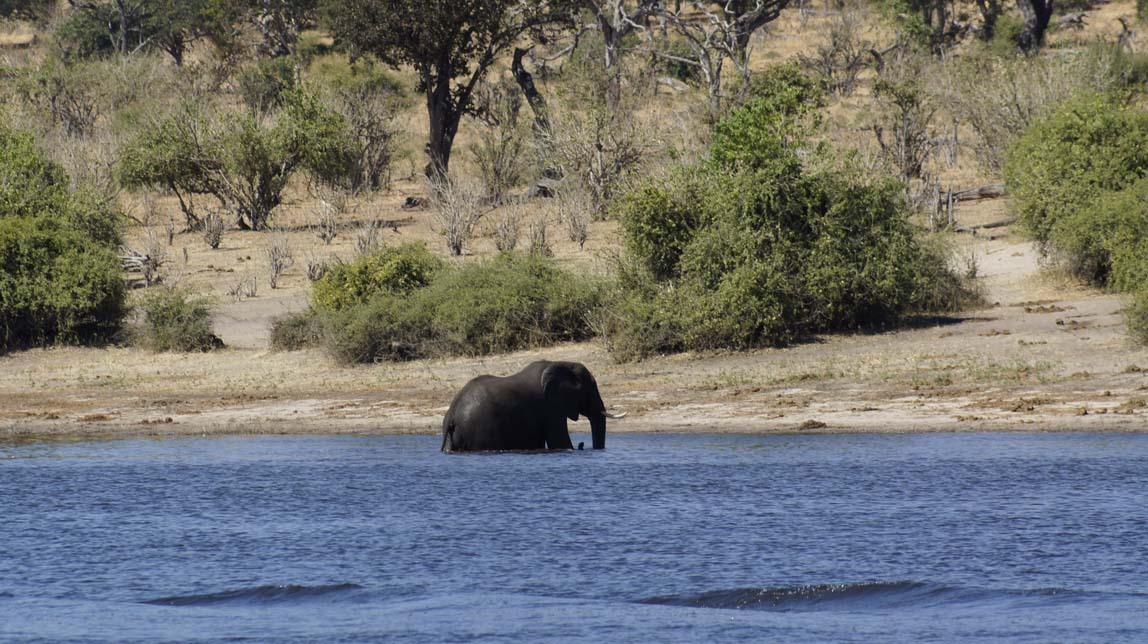
The elephants walk along.
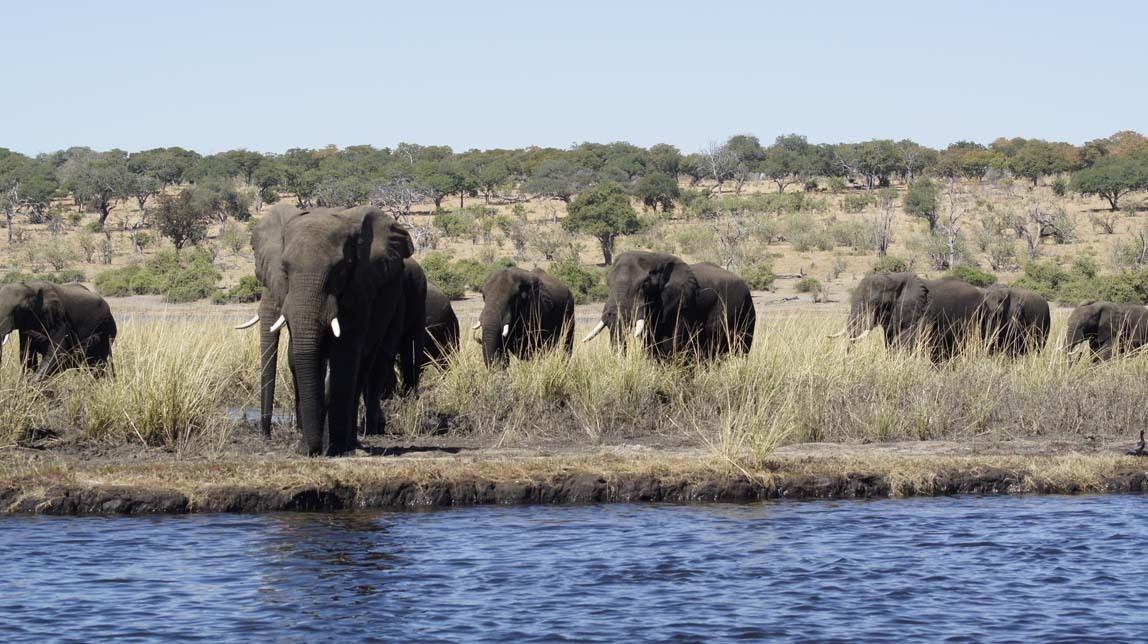
Then we notice something just in front of the elephants. I'm not talking about the Egyptian goose or the white egret in the photo below: look closely. Those big grey balls are hippos! The elephants are walking right towards them.
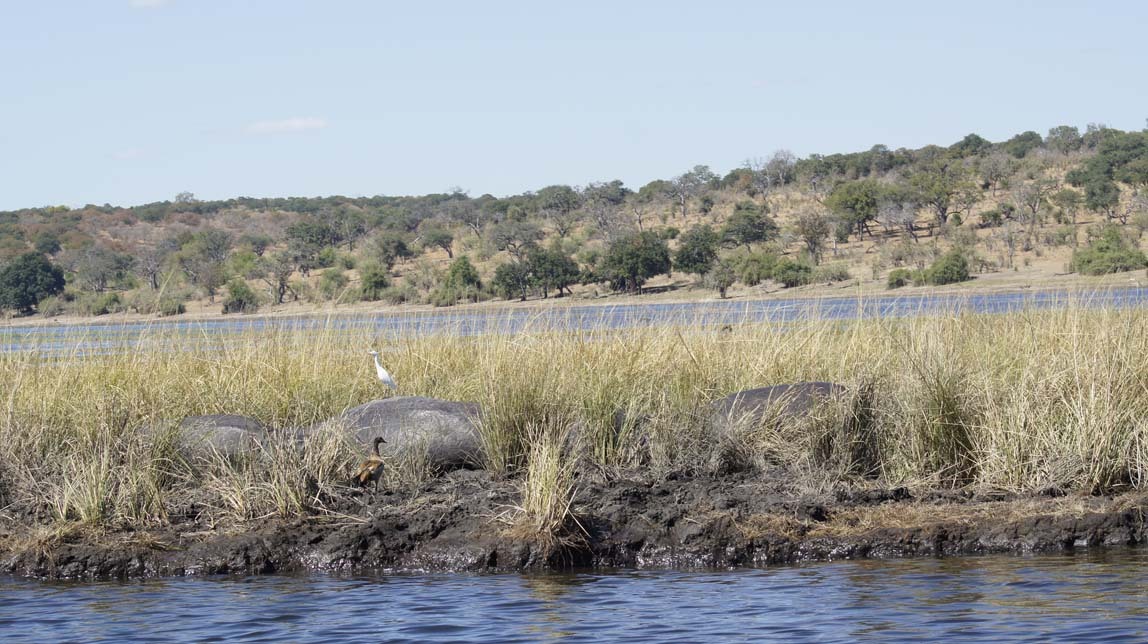
The bull elephant hasn't quite seen them yet:
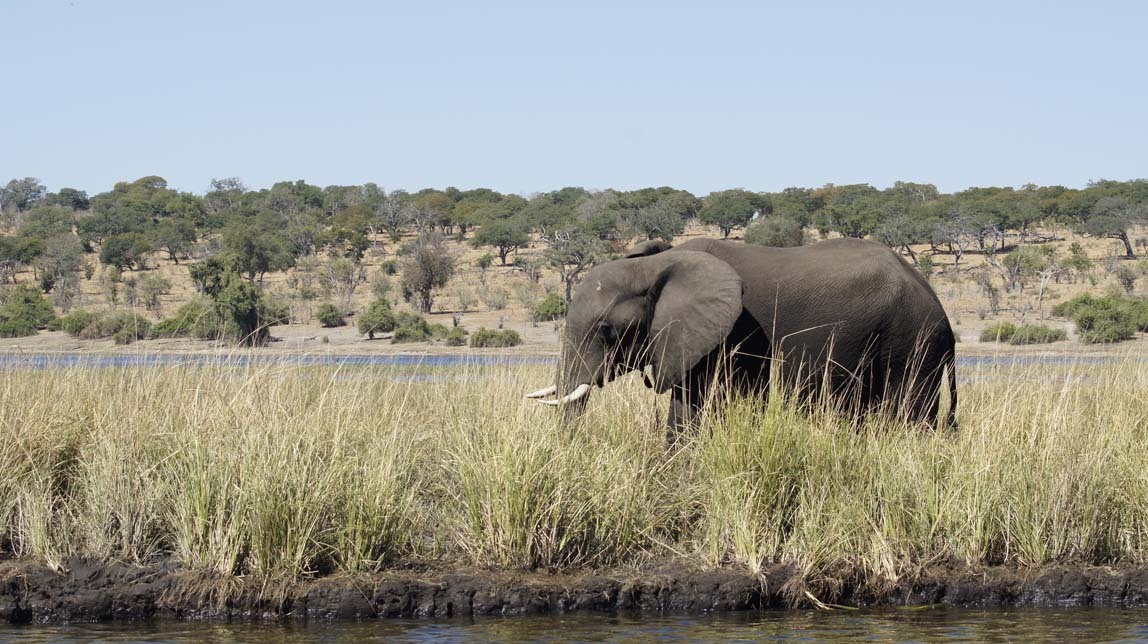
Now he does - you can see him looking at the hippos on the left:
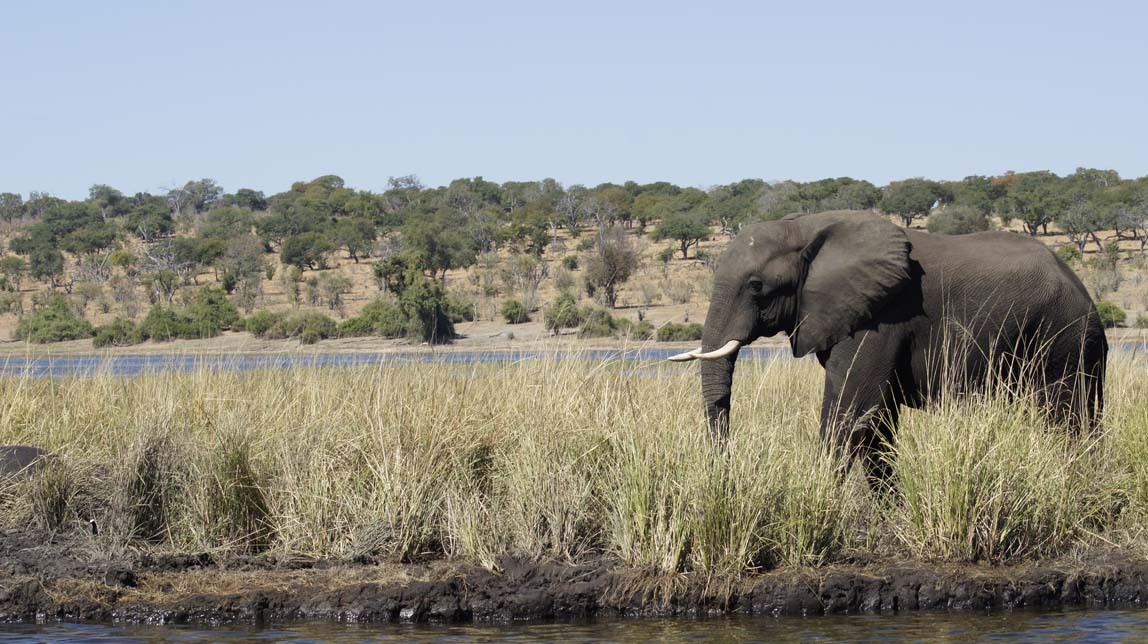
He puts his head down . . .
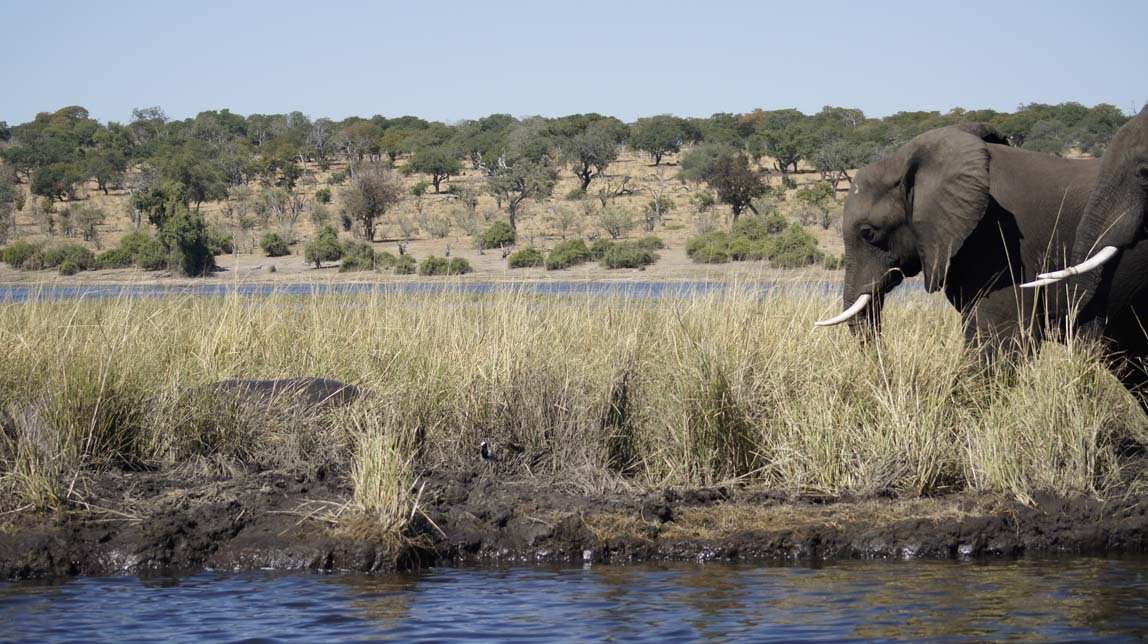
. . . and then up as the elephants come closer to the hippos.
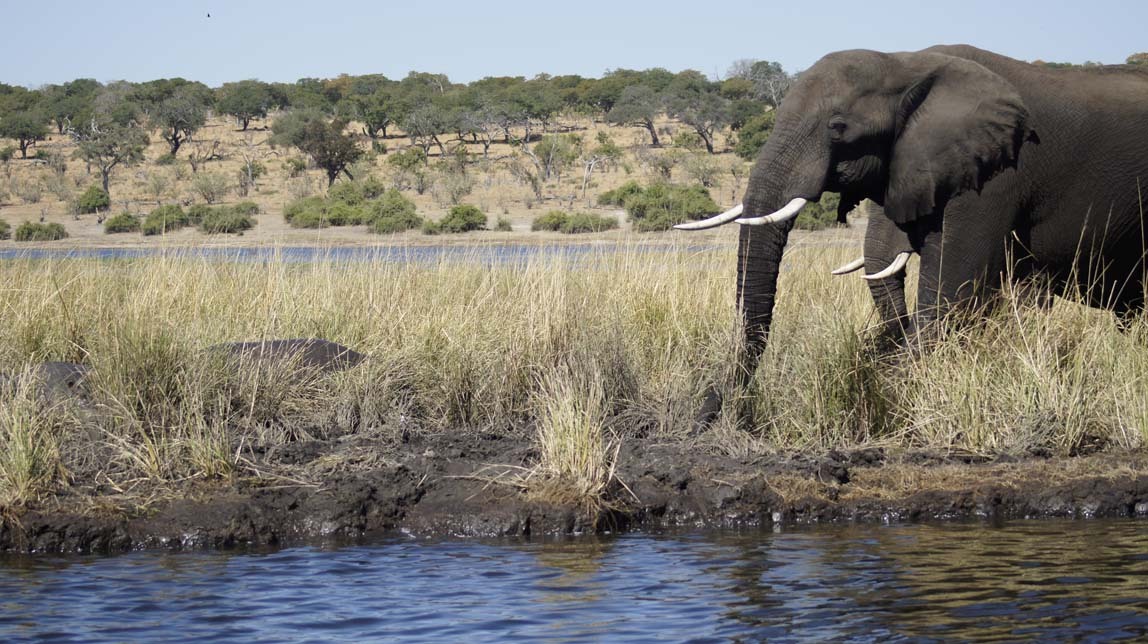
The elephants come a little closer, curling the bottom of their trunks.
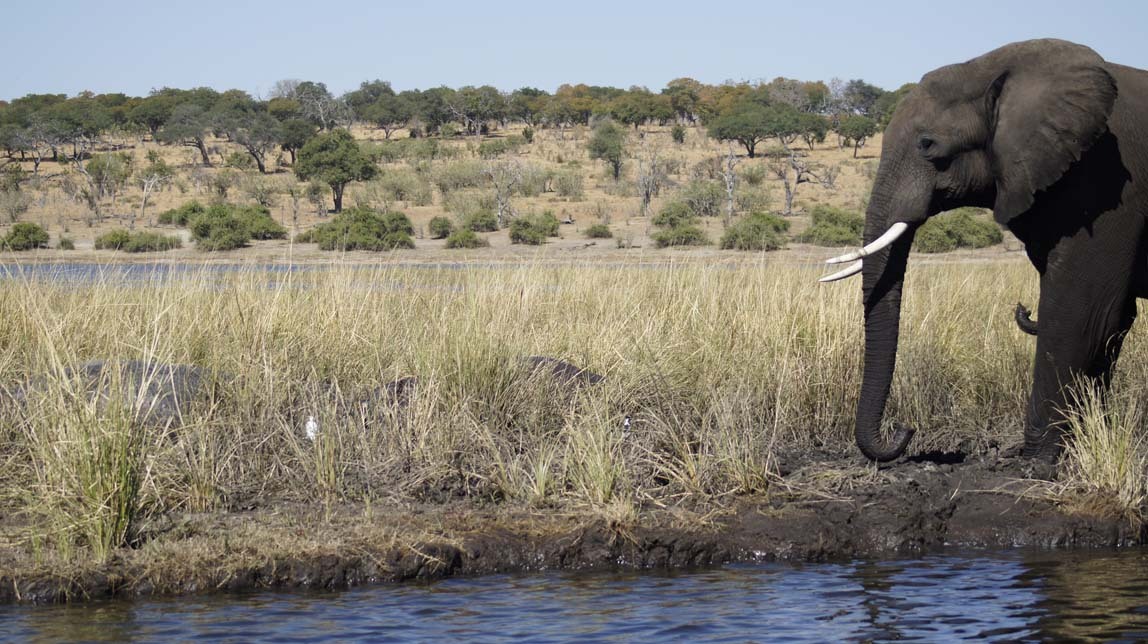
Then the bull elephant turns back to the rest of the herd, the askaris, and flares his ears in communication.
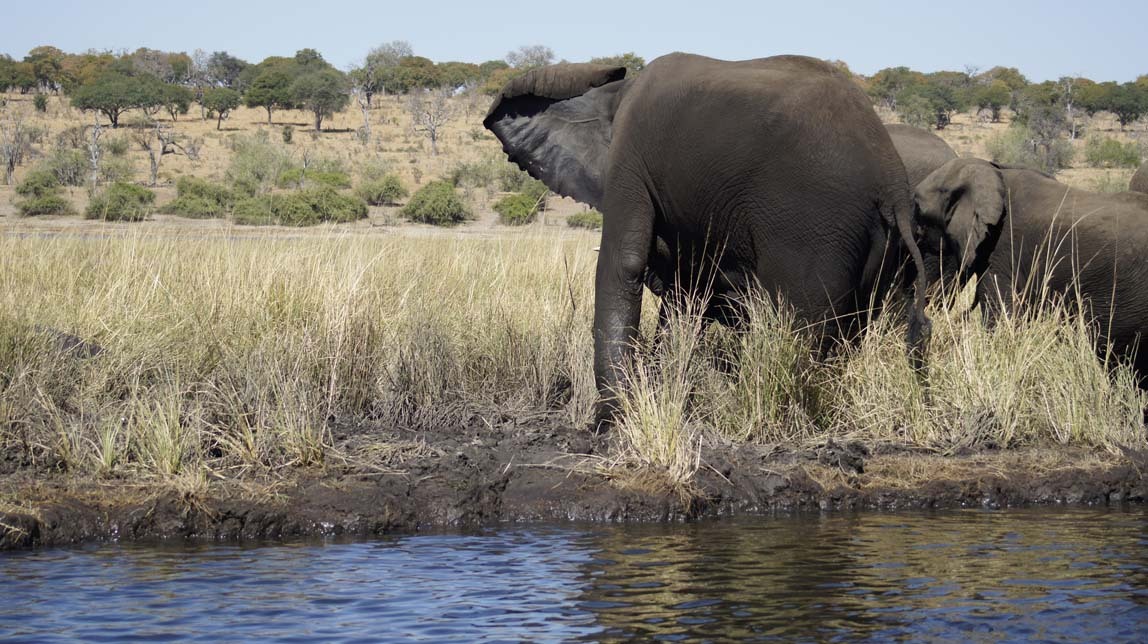
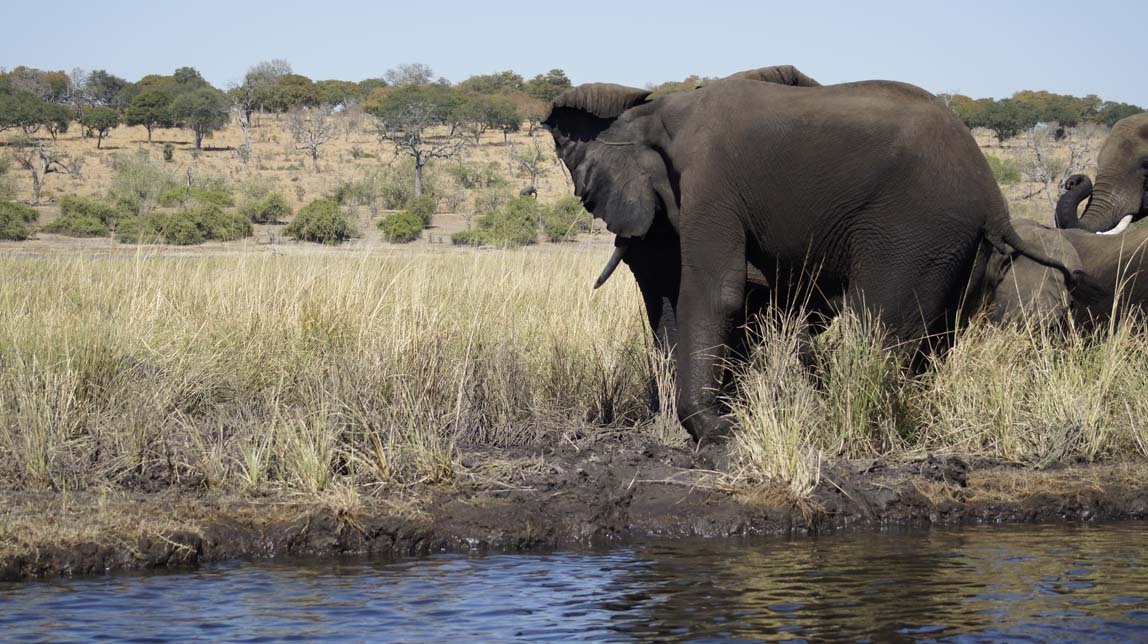
The bull elephant now leads his charges past the hippos. The hippos seemed to be carefully ignoring the elephants, heads turned away and not moving.
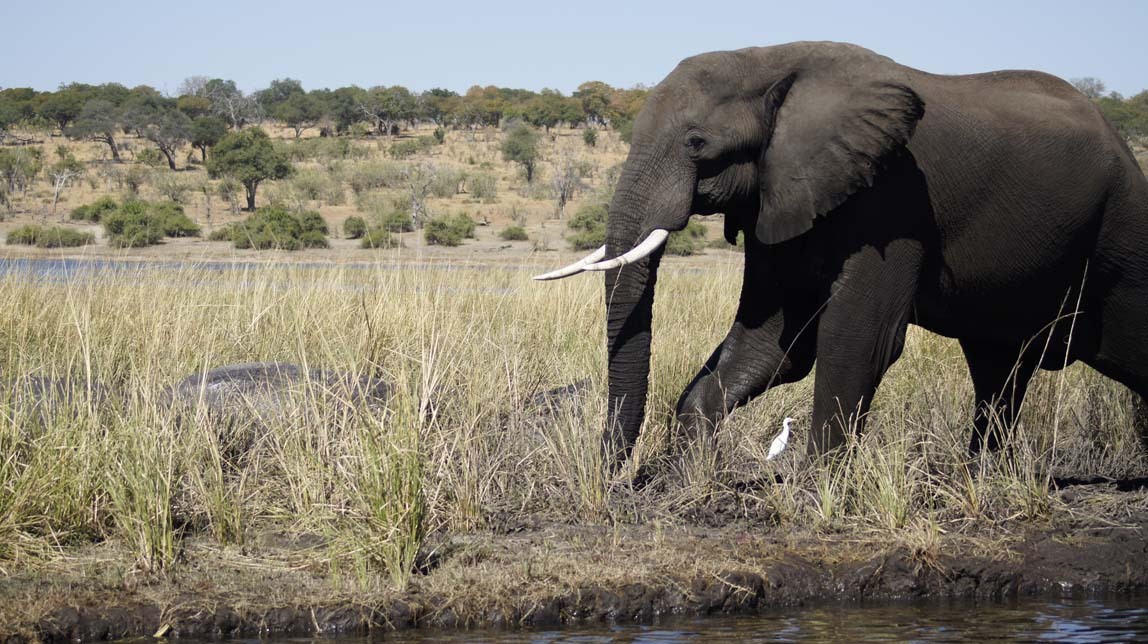
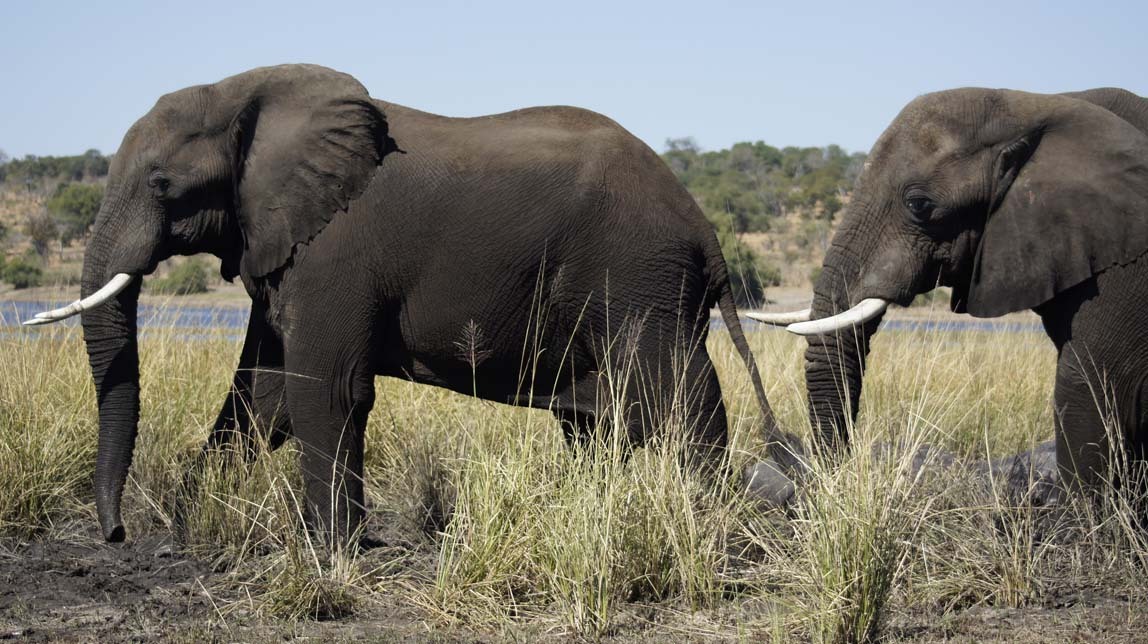
I changed the camera to movie mode to catch the march of the elephants, one by one, past the hippos; note how the hippos take a couple glances at the elephants, but mostly keep still with their backs turned.
Eventually a couple of the hippos get up and walk away, their backs to the elephants.
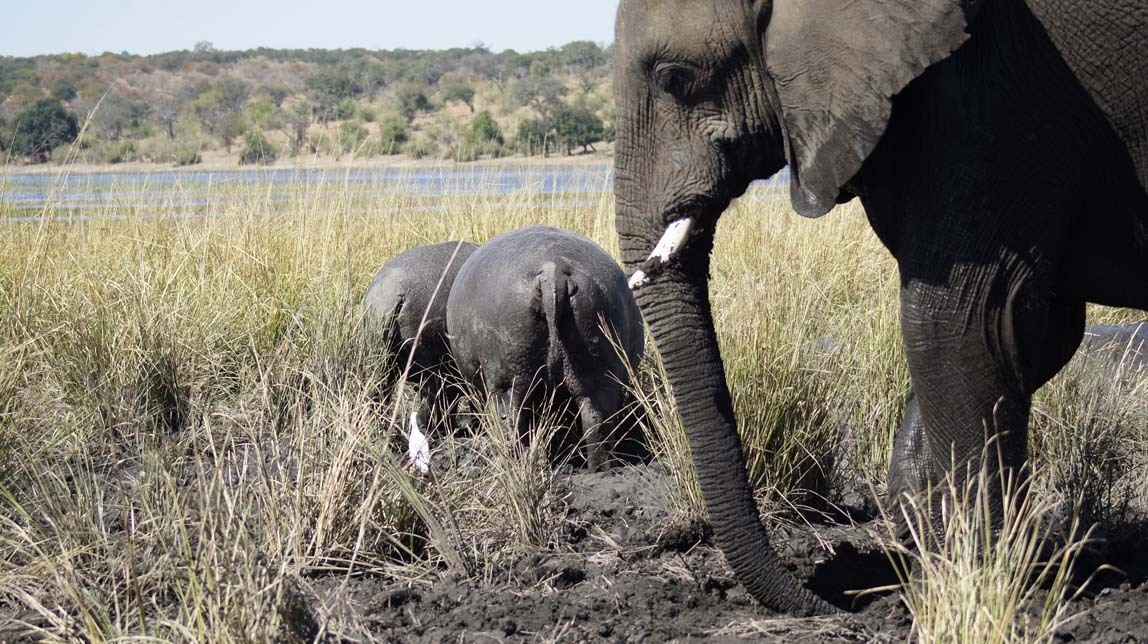
The film clip (just above) shows how the last couple male elephants stopped before passing the hippos and started playing in the mud. In this still, the smallest male gets all wet on top:
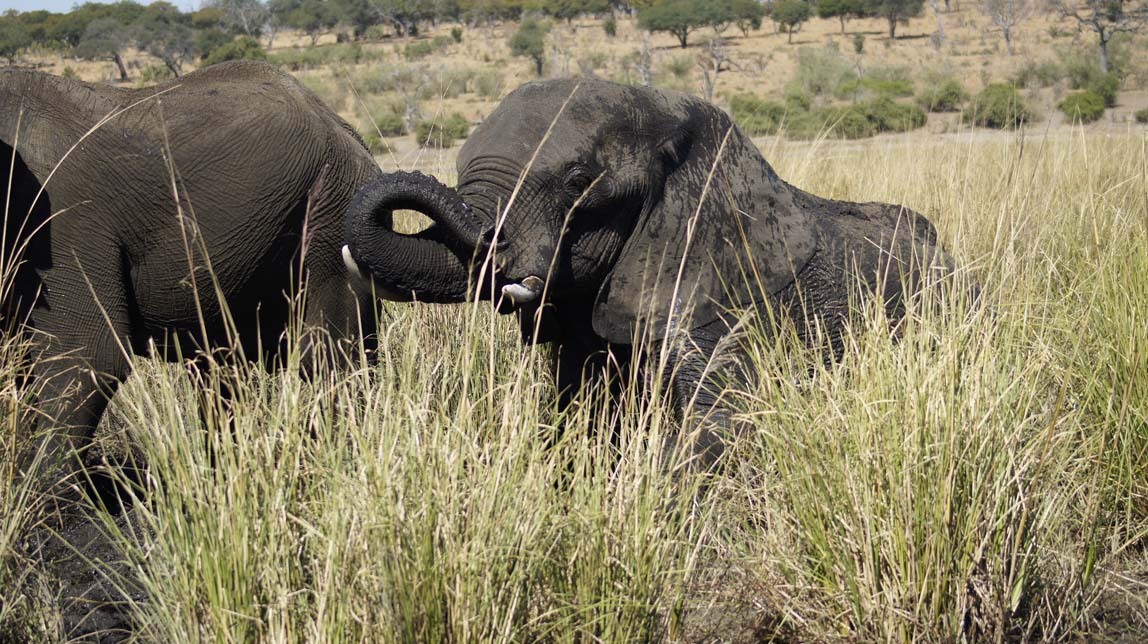
The mud play continues:
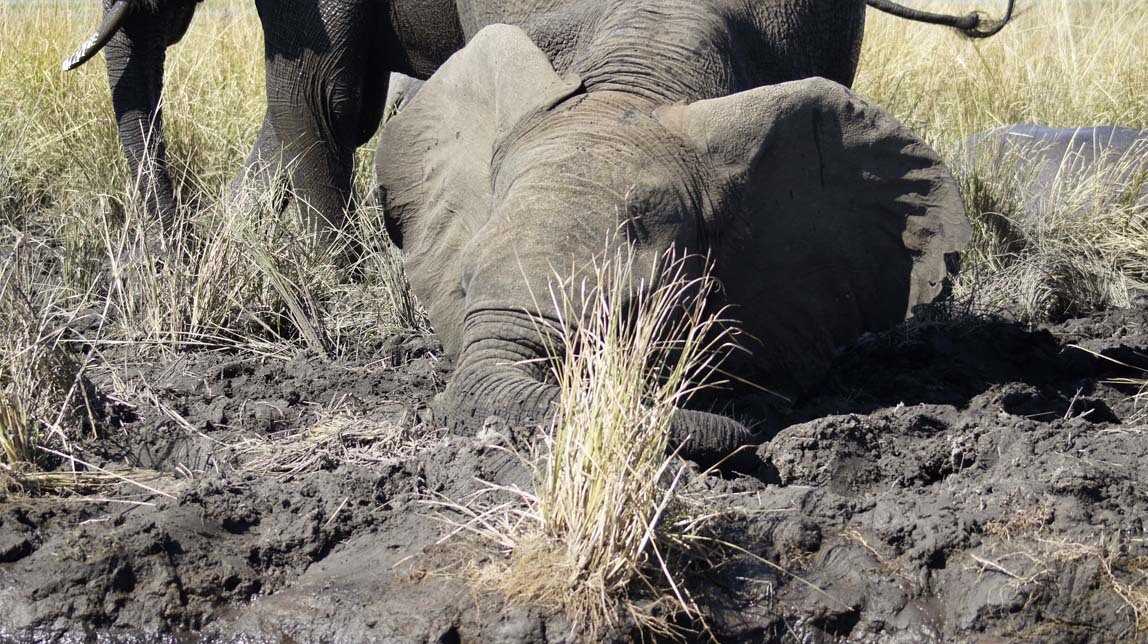
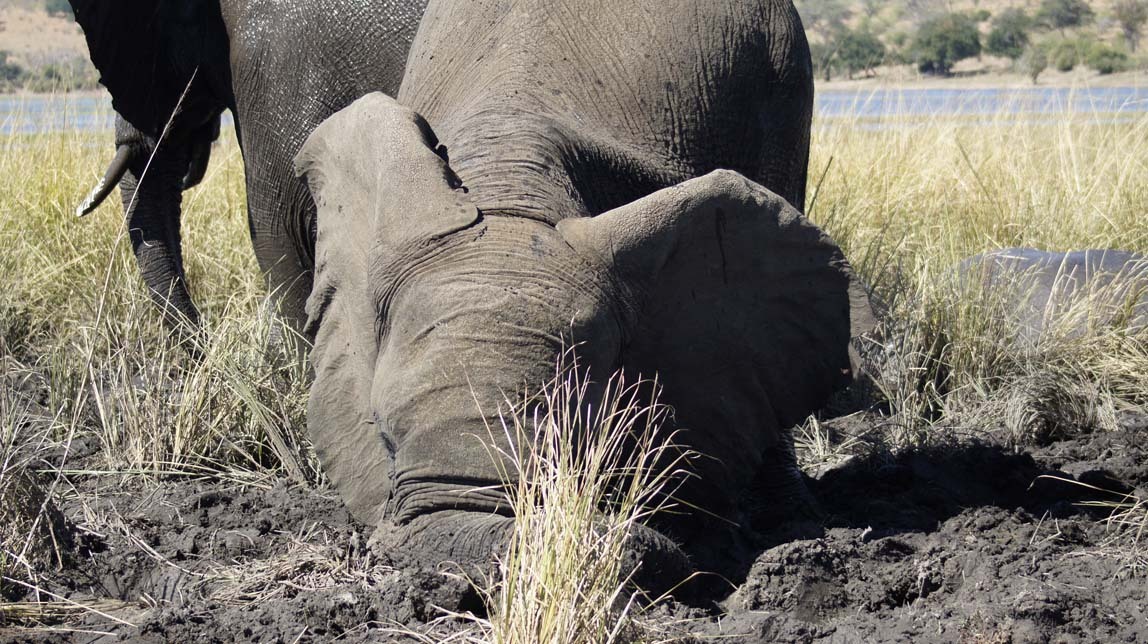
Happy elephant:
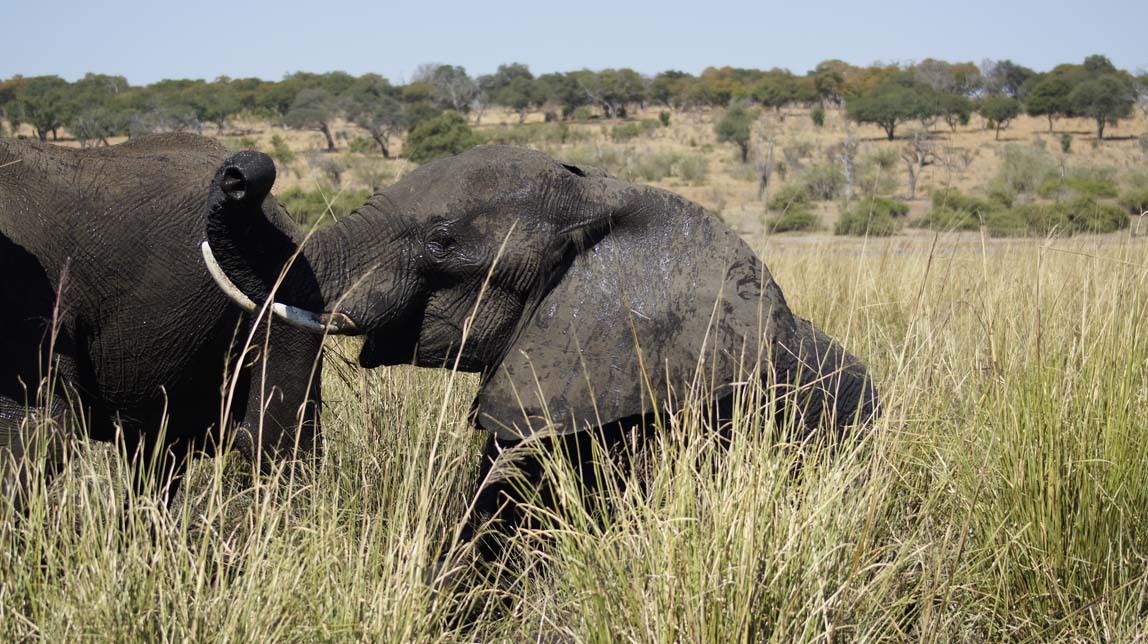
Wet elephants:
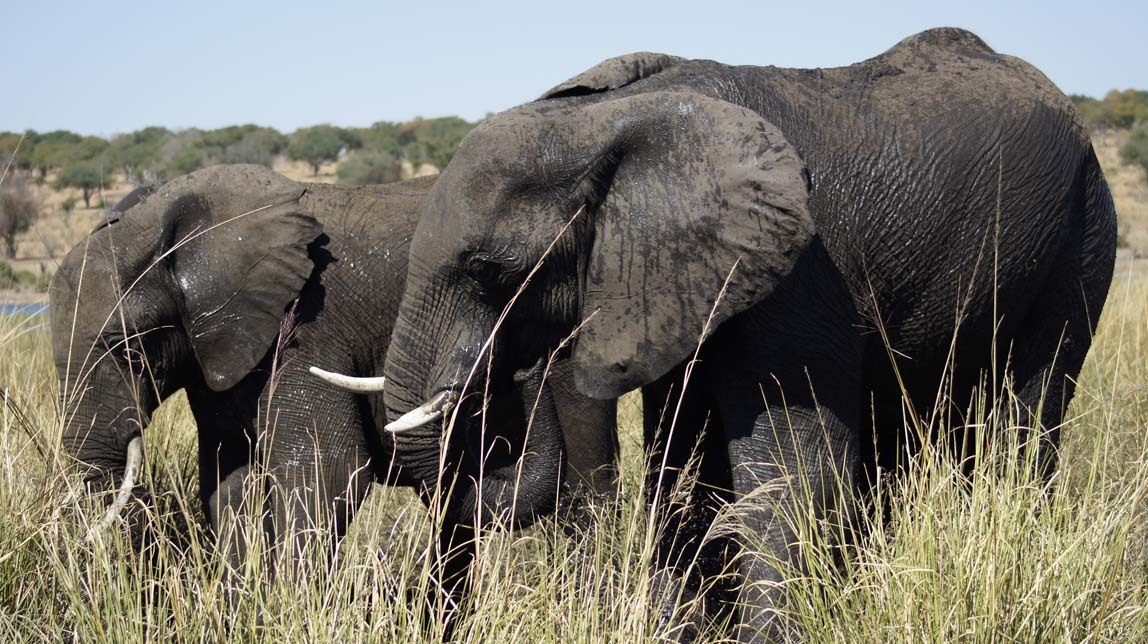
The elephants are walking away. It's 1 pm and time for us to go back to the lodge for lunch.
Weeks and years after our safari, we will remember the elephant crossing as one of the best parts of the trip, right up there with seeing the pride of lions. What an experience.
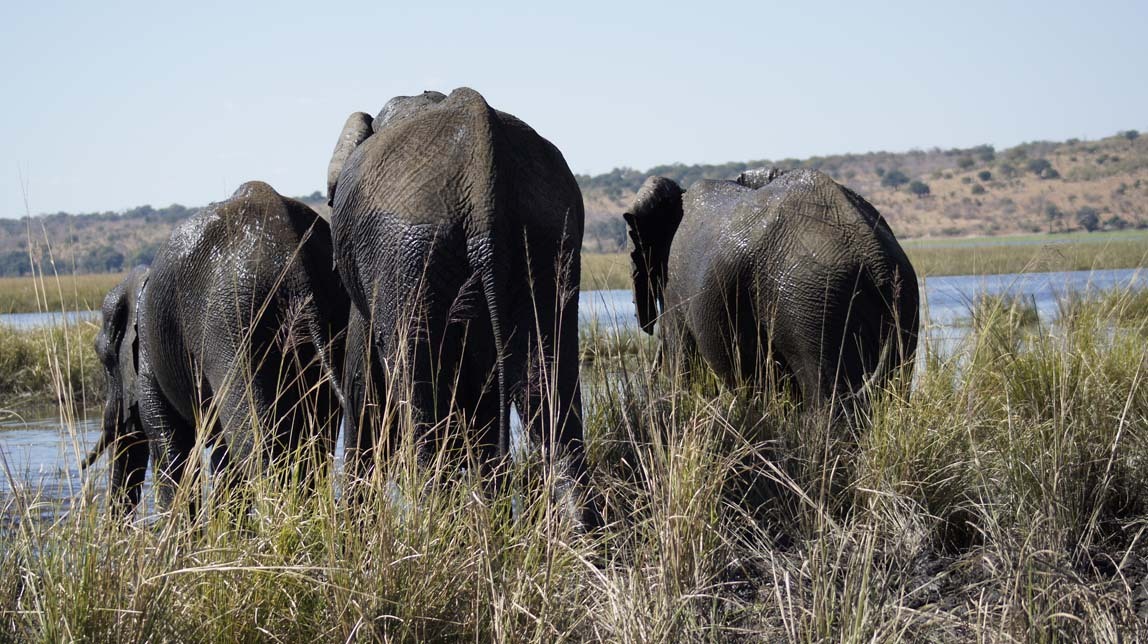
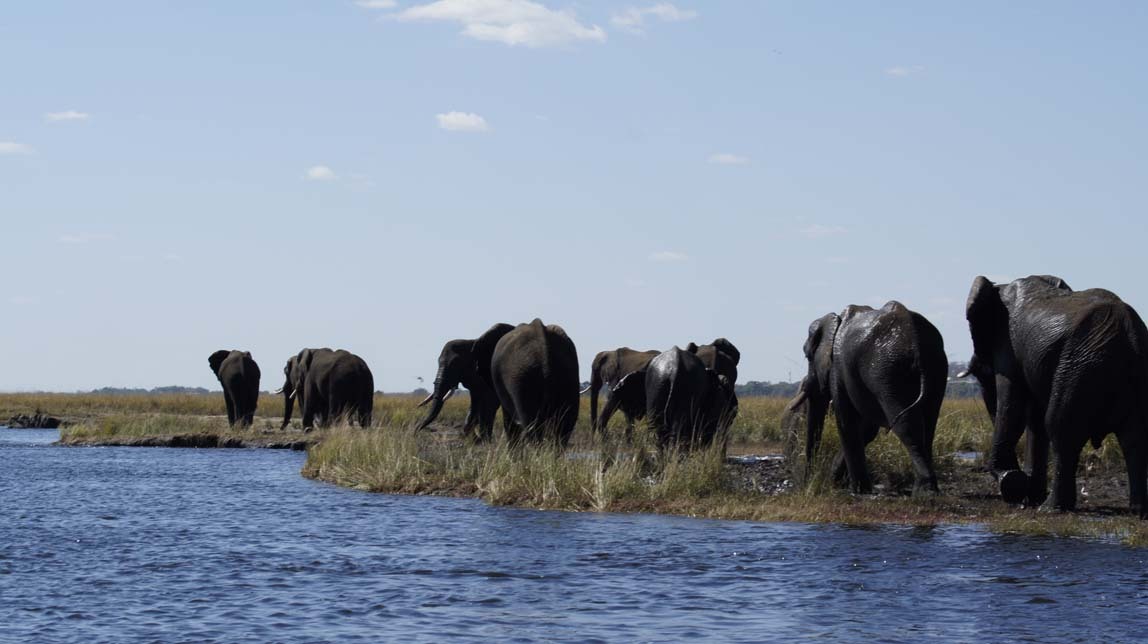
Navigation: first safari blog entry
Next blog entry
Tonia tells us that this is a special herd: it's a "bachelor herd" of young and old male elephants. Such herds are called askaris, and they do what groups of males do most everywhere: they test their strength, chase girls, hang out, and play.
Each bachelor herd is led by an old bull elephant who not only teaches the younger males where the best watering holes and feeding spots are located, he teaches them how to be good male elephants: "male etiquette". In return, the young males treat the old bull with respect and affection. Young males without the guidance of a bull elephant have been known to express rogue behavior, such as rampaging through villages.
As we draw closer, we can sure tell that this is a herd of elephants with attitude. It's just different from the mixed herds we had seen before. We are so enthralled that we spend an hour and a half watching them. I'll let my photos and movies tell the story.
The herd in the distance:

The entire herd barely fits in my camera frame:

I start taking a movie. Please excuse the shaky moments, I hadn't practiced movie-taking before we went to Africa. Plus I am shooting through the big heavy lens from a rocking boat. But notice the elephants playing in the middle of the film.
This panorama shows the entire herd but you might have to scroll to see it all:

A young male with attitude:

We notice a water monitor near the elephants. Hey - I know this is a crummy photo, but trust me, there's a reason for it.

The herd gathers ranks and moves down river about half a mile. (Can you name the birds in the foreground?)

Our boat follows the herd and moves down to the other side of it, so the next photos are taken from the opposite direction (and about 25 minutes later).
The elephants came out on a small peninsula, moving around at the waters edge, flapping their ears, drinking water, and stomping in the water.

Remember that water monitor? It has followed the elephants on their travel down the river bank:

Here's a movie of the elephants milling around the river bank. The bellowing sound is from some hippos that are nearby.
Here are the elephants about ten minutes later. If you listen to the sound in the movie, you will hear us wondering if the elephants will go into the water and cross the river.

The water monitor is still following the elephants.

Now, watch this!
Here are some stills of the elephants in the water. The bull elephant leads:

Blows water out his trunk:

A panorama of all twelve elephants, with the bull in the front. Note the way the last male hangs back. He never did cross the river. (We are pretty sure the water monitor did, though.)

They play around a bit:

Swimming, one with his snorkel up:

Here all you see is the tops of the elephants and their snorkels:

A close-up of the snorkel play:

There are three snorkels in this one:

I switch back to movie mode.
The first elephants are almost to the land.



Here they are walking out of the water:





Eventually the elephants are out of the water and walking along a grassy riverbank.

Except for the one elephant that never crossed. He is still on the other side of the river.

The elephants walk along.

Then we notice something just in front of the elephants. I'm not talking about the Egyptian goose or the white egret in the photo below: look closely. Those big grey balls are hippos! The elephants are walking right towards them.

The bull elephant hasn't quite seen them yet:

Now he does - you can see him looking at the hippos on the left:

He puts his head down . . .

. . . and then up as the elephants come closer to the hippos.

The elephants come a little closer, curling the bottom of their trunks.

Then the bull elephant turns back to the rest of the herd, the askaris, and flares his ears in communication.


The bull elephant now leads his charges past the hippos. The hippos seemed to be carefully ignoring the elephants, heads turned away and not moving.


I changed the camera to movie mode to catch the march of the elephants, one by one, past the hippos; note how the hippos take a couple glances at the elephants, but mostly keep still with their backs turned.
Eventually a couple of the hippos get up and walk away, their backs to the elephants.

The film clip (just above) shows how the last couple male elephants stopped before passing the hippos and started playing in the mud. In this still, the smallest male gets all wet on top:

The mud play continues:


Happy elephant:

Wet elephants:

The elephants are walking away. It's 1 pm and time for us to go back to the lodge for lunch.
Weeks and years after our safari, we will remember the elephant crossing as one of the best parts of the trip, right up there with seeing the pride of lions. What an experience.


Navigation: first safari blog entry
Next blog entry
Comments
No comments yet
Add Comment